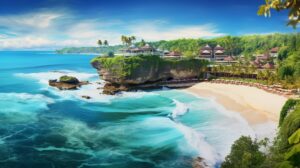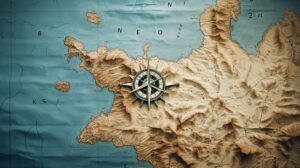What country is MNE?
Montenegro (MNE) is a country located in Southeast Europe. It is bordered by Bosnia and Herzegovina, Serbia, Kosovo, Albania, and Croatia. The capital of Montenegro is Podgorica, while Cetinje is the historical capital. The country has a diverse landscape, with high mountains, a coastal plain, and a karst region. Montenegro has a Mediterranean climate, with dry summers and mild, rainy winters. The country is known for its rich biodiversity, including various mammal and bird species. Montenegro is a member of international organizations such as the United Nations, NATO, and the World Trade Organization. It has been in the process of joining the European Union since 2012.
Key Takeaways:
- Montenegro (MNE) is located in Southeast Europe.
- The country is bordered by Bosnia and Herzegovina, Serbia, Kosovo, Albania, and Croatia.
- Podgorica is the capital of Montenegro, while Cetinje holds historical significance.
- Montenegro boasts diverse landscapes, including mountains, a coastal plain, and a karst region.
- The country experiences a Mediterranean climate with dry summers and mild, rainy winters.
These key takeaways provide a brief overview of Montenegro’s location, geography, climate, and international affiliations. Further sections will delve deeper into these aspects, exploring the country’s biodiversity, membership in global organizations, and its aspirations to join the European Union.
Geographical Location of Montenegro
Montenegro is a country located in Southeast Europe. It shares its borders with Bosnia and Herzegovina, Serbia, Kosovo, Albania, and Croatia. Situated in the Balkans region, Montenegro is blessed with a diverse landscape and rich natural beauty.
Mountainous Majesty
The country is known for its spectacular mountain ranges, including the Dinaric Alps and the Prokletije. These majestic peaks provide breathtaking vistas and opportunities for outdoor activities like hiking and skiing. The highest peak, Bobotov Kuk, stands at an impressive 2,522 meters, offering panoramic views of the surrounding countryside.
| Mountain Range | Peak | Elevation |
|---|---|---|
| Dinaric Alps | Bobotov Kuk | 2,522 meters |
| Prokletije | Zla Kolata | 2,534 meters |
Enchanting Coastline
Montenegro’s coastline stretches along the Adriatic Sea, offering picturesque beaches, charming coastal towns, and pristine waters. The Bay of Kotor, a UNESCO World Heritage Site, is renowned for its stunning fjord-like landscapes and medieval towns. Visitors can explore the winding streets of Kotor, relax on the sandy beaches of Budva, or soak up the sun in the luxury resorts of Sveti Stefan.
Karst Wonders
The karst region of Montenegro is a treasure trove of natural wonders. With its limestone formations, caves, and underground rivers, it captivates explorers and nature enthusiasts alike. The Tara River Canyon, considered one of the deepest canyons in the world, offers thrilling white-water rafting adventures, while the Ostrog Monastery, built into the side of a cliff, is a spiritual sanctuary and a testament to human ingenuity.
From its magnificent mountains to its stunning coastline and captivating karst landscapes, Montenegro offers a multitude of experiences for travelers seeking natural beauty and outdoor adventures.
Landscape and Climate of Montenegro
Montenegro boasts a diverse landscape, with high mountains, a coastal plain, and a karst region. The country is known for its breathtaking natural beauty, offering stunning vistas and unique geographical features. The majestic mountains, including the Durmitor and Prokletije ranges, provide a haven for outdoor enthusiasts, with opportunities for hiking, skiing, and mountaineering.
In contrast to the rugged terrain, Montenegro’s coastal plain stretches along the Adriatic Sea, offering picturesque beaches and charming seaside towns. The Bay of Kotor, a UNESCO World Heritage site, enchants visitors with its fjord-like appearance and historic villages nestled along its shores.
Moreover, Montenegro boasts a distinctive karst region, characterized by limestone formations, underground caves, and crystal-clear rivers. The Tara River Canyon, Europe’s deepest canyon, is a testament to the country’s unique geological heritage.
Biodiversity of Montenegro
The diverse landscape of Montenegro is home to a remarkable array of plant and animal species. The country’s commitment to environmental conservation has helped preserve its rich biodiversity, making it a haven for nature lovers and researchers alike.
Montenegro is particularly renowned for its diverse mammal and bird species. From brown bears and lynx to chamois and wildcats, the country’s forests and mountains provide vital habitats for these magnificent creatures. Avian enthusiasts will be delighted by the variety of bird species, including the rare and endangered Dalmatian pelican and the majestic golden eagle.
| Mammal Species | Bird Species |
|---|---|
| Brown bear | Dalmatian pelican |
| Lynx | Golden eagle |
| Chamois | Black stork |
| Wildcat | Bonelli’s eagle |
Montenegro’s commitment to preserving its natural heritage is evident in the establishment of national parks and protected areas, such as Durmitor National Park and Lake Skadar National Park. These areas not only safeguard the country’s unique ecosystems but also provide opportunities for eco-tourism and sustainable development.
In conclusion, Montenegro’s landscape and climate offer a captivating blend of mountains, coastlines, and karst formations. Its rich biodiversity and commitment to environmental conservation make it a hidden gem for nature enthusiasts. Whether you’re seeking outdoor adventures, relaxation on pristine beaches, or a glimpse into Europe’s natural wonders, Montenegro is a destination that promises to leave a lasting impression.
Biodiversity of Montenegro
Montenegro is renowned for its rich biodiversity, with numerous mammal and bird species inhabiting the region. The country’s diverse landscape, which includes high mountains, a coastal plain, and a karst region, provides a variety of habitats for different species to thrive.
One of the notable mammal species found in Montenegro is the Balkan lynx. Considered one of the rarest and most endangered big cats in the world, the Balkan lynx has found a sanctuary in the country’s dense forests. Montenegro is also home to the Balkan chamois, a goat-antelope species known for its agility in mountainous terrain.
In addition to mammals, Montenegro boasts a rich avian population. The country is a key habitat for various bird species, including the rare and protected Dalmatian pelican. Other notable bird species found in Montenegro include the golden eagle, black stork, and various migratory birds that use the country as a transit point during their journeys.
Conservation Efforts in Montenegro
Recognizing the importance of preserving its natural heritage, Montenegro has made significant efforts in environmental conservation. The country has established national parks and protected areas to safeguard its diverse ecosystems and promote sustainable tourism.
| National Park | Location | Main Attractions |
|---|---|---|
| Durmitor National Park | Northern Montenegro | Tara River Canyon, Black Lake |
| Skadar Lake National Park | Southern Montenegro | Skadar Lake, Pelicans and other bird species |
| Biogradska Gora National Park | Central Montenegro | Biogradsko Lake, Primeval forest |
These protected areas serve as important habitats for numerous flora and fauna species, ensuring their survival and contributing to the country’s overall biodiversity. Montenegro’s commitment to environmental conservation has been recognized globally, and the country continues to work towards sustainable practices and promoting responsible tourism.
International Organizations and Montenegro
Montenegro actively participates in international organizations, including the United Nations, NATO, and the World Trade Organization. As a member of the United Nations, Montenegro contributes to global peace and security by advocating for diplomatic solutions to conflicts and providing support for humanitarian initiatives. Within NATO, Montenegro collaborates with other member states to ensure collective defense and promote stability in the Euro-Atlantic region. Its membership in the World Trade Organization facilitates trade relations and economic cooperation with nations around the world.
Being part of these international organizations not only enhances Montenegro’s global standing but also provides the country with numerous benefits. It enables Montenegro to actively participate in shaping global policies, contributing to decision-making processes on issues such as peacekeeping, security, development, and trade. Moreover, membership in these organizations fosters diplomatic ties, strengthens bilateral relations, and creates opportunities for economic growth and investment.
Montenegro’s Commitment to International Cooperation
Montenegro’s involvement in international organizations reflects its commitment to international cooperation and its aspiration to be an active player in the global arena. By engaging in these forums, Montenegro seeks to contribute to regional and global peace, security, and development. The country’s membership in the United Nations, NATO, and the World Trade Organization demonstrates its willingness to align with international norms, standards, and values.
In conclusion, Montenegro’s active participation in international organizations showcases its dedication to promoting peace, security, and economic prosperity on a global scale. By collaborating with other nations within the United Nations, NATO, and the World Trade Organization, Montenegro contributes to shaping international policies and advancing its own interests. This engagement highlights the country’s commitment to fostering diplomatic ties, strengthening regional stability, and pursuing opportunities for economic growth and development.
| International Organizations | Membership Since |
|---|---|
| United Nations | 2006 |
| NATO | 2017 |
| World Trade Organization | 2012 |
Montenegro’s Path to the European Union
Montenegro has been in the process of joining the European Union since 2012, undertaking significant reforms to meet the EU’s criteria. As a candidate country, Montenegro has been working diligently to align its legislation, institutions, and practices with EU standards and values. This journey towards EU membership represents an important milestone in Montenegro’s history and future development.
Joining the European Union holds numerous advantages for Montenegro. It offers opportunities for economic growth, increased trade, and investment, as well as access to EU funding and programs. EU membership also provides Montenegro with a platform to participate in shaping European policies and decision-making processes, enabling the country to have a greater influence on regional and global affairs.
Montenegro’s commitment to European integration is demonstrated by its active involvement in various EU initiatives and programs. The country has embraced the principles of democracy, human rights, and the rule of law, which are core values of the European Union. Montenegro has made progress in areas such as public administration reform, judicial independence, and the fight against corruption and organized crime.
Furthermore, Montenegro’s efforts to align itself with EU standards have not gone unnoticed. The European Commission regularly assesses the country’s progress and provides recommendations for further improvements. Montenegro’s determination and achievements in the accession process have been recognized and praised by the EU, reinforcing the country’s position as a serious candidate for EU membership.
FAQ
Q: What country is MNE?
A: MNE refers to Montenegro, which is a country located in Southeast Europe.
Q: What is the geographical location of Montenegro?
A: Montenegro is bordered by Bosnia and Herzegovina, Serbia, Kosovo, Albania, and Croatia. The capital of Montenegro is Podgorica, while Cetinje is the historical capital.
Q: What is the landscape and climate of Montenegro?
A: Montenegro has a diverse landscape, including high mountains, a coastal plain, and a karst region. The country has a Mediterranean climate, with dry summers and mild, rainy winters.
Q: What is the biodiversity of Montenegro?
A: Montenegro is known for its rich biodiversity, which includes various mammal and bird species. The country is committed to environmental conservation and preserving its natural heritage.
Q: Which international organizations is Montenegro a member of?
A: Montenegro is a member of international organizations such as the United Nations, NATO, and the World Trade Organization. The country actively participates in global affairs.
Q: What is Montenegro’s path to joining the European Union?
A: Montenegro has been in the process of joining the European Union since 2012. It is working towards aligning with EU standards and aims to reap the benefits of EU membership in the future.



